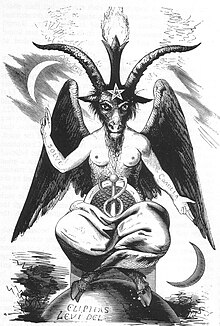
Back Camí de la Mà Esquerra i Camí de la Mà Dreta Catalan Stezka pravé a levé ruky Czech Pfad zur linken Hand German Maldekstra vojo kaj dekstra vojo Esperanto Camino de la mano izquierda y camino de la mano derecha Spanish Vasemman käden polku Finnish Voie de la main gauche et voie de la main droite French Bal és jobb oldali ösvény Hungarian Via della mano sinistra e della mano destra Italian 左道と右道 Japanese

In Western esotericism, left-hand path and right-hand path are two opposing approaches to magic. Various groups engaged with the occult and ceremonial magic use the terminology to establish a dichotomy, broadly simplified as (malicious) black magic on the left and (benevolent) white magic on the right.[1] Others approach the left/right paths as different kinds of workings, without connotations of good or bad magical actions.[2] Still others treat the paths as fundamental schemes, connected with external divinities on the right, contrasted with self-deification on the left.
The terms have their origins in tantra: the right-hand path (RHP, or dakṣiṇācāra) applied to magical groups that follow specific ethical codes and adopt social convention, while the left-hand path (LHP, or vāmācāra) adopts the opposite attitude, breaking taboos and abandoning set morality. Contemporary occultists such as Peter J. Carroll have stressed that both paths can be followed by a magical practitioner, as essentially they have the same goals.[3]
- ^ Evans (2007), p. 152.
- ^ Evans (2007), p. 176.
- ^ Carroll (1987), p. [page needed].